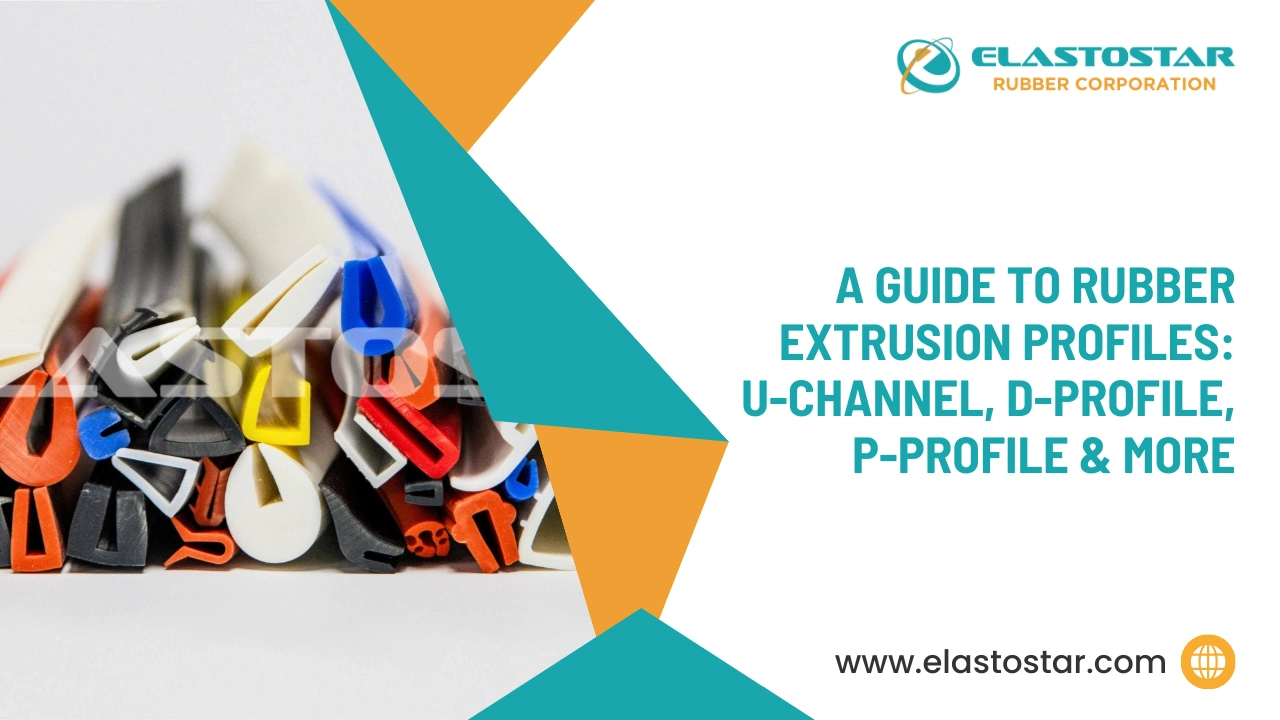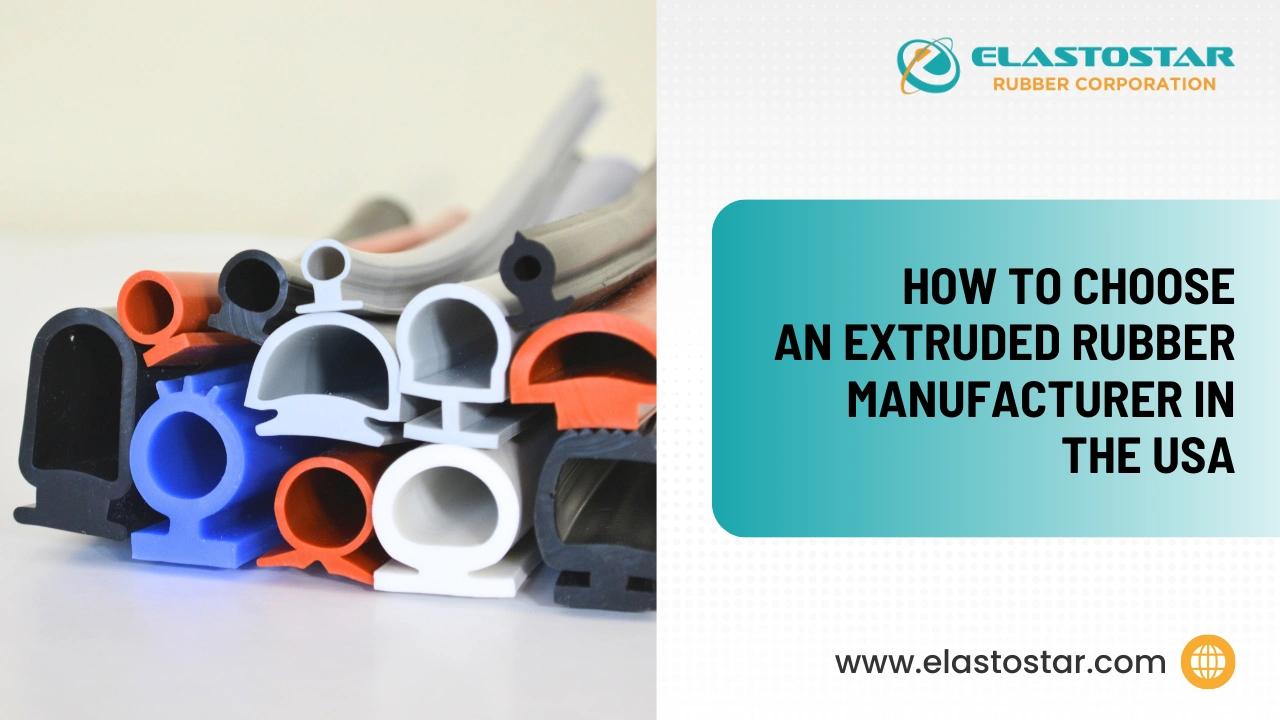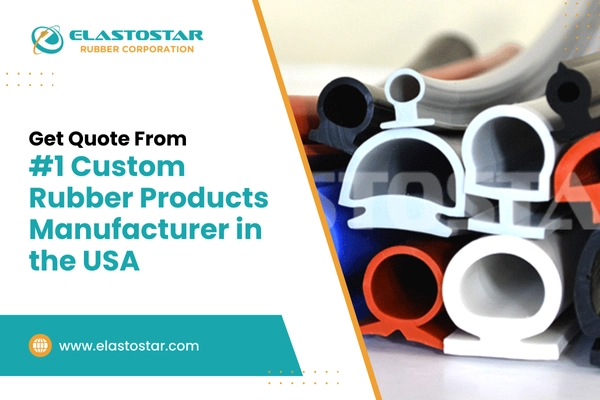Silicone rubber is a versatile and essential material used across various industries, from medical devices to automotive parts. But where does this remarkable material come from? Understanding the origins and manufacturing process of silicone rubber can provide valuable insights into its unique properties and widespread applications.
In 2021, the global silicone market was valued at over $18 billion, with projections showing a compound annual growth rate (CAGR) of 4.5% from 2022 to 2028. These figures underscore the growing demand and importance of silicone rubber in modern manufacturing. Let’s delve into its fascinating journey, tracing the path from raw materials to the essential products that power our daily lives.
Table of Contents
What is Silicone Rubber?
Manufacturers craft silicone rubber, a man-made elastic material, from silicon, oxygen, carbon, and hydrogen. It combines the flexibility and resilience of rubber with the chemical stability and temperature resistance of silicon. This combination makes it an ideal material for applications requiring durability and performance under extreme conditions.
The Origins of Silicone Rubber
Silicone rubber’s journey begins with its primary ingredient, silicon. Silicon is a natural element found abundantly in the earth’s crust, primarily in the form of silica (sand and quartz). Extracting silicon from silica involves a high-temperature reduction process in electric furnaces, resulting in metallurgical-grade silicon.
How Did The Transformation From Silicon to Silicone Happen?
Turning silicon into silicone rubber involves a series of important steps:
- Silicon Extraction: Silicon is obtained from silica through a reduction process involving carbon at high temperatures. This process produces metallurgical-grade silicon.
- Chemical Synthesis: The silicon is then mixed with methyl chloride and a copper catalyst, creating methyl chlorosilane compounds.
- Hydrolysis and Polymerization: The methyl chlorosilane compounds undergo hydrolysis, resulting in the formation of silanols. These silanols then polymerize to form polydimethylsiloxane (PDMS), which is the base polymer for silicone rubber.
How is Silicone Made Into Rubber?
The PDMS base polymer undergoes further processing to become silicone rubber. This process includes mixing in fillers, curing agents, and other additives to get the right properties. They then subject the mixture to heat and pressure, causing the polymer chains to cross-link and form a solid, elastic material. This process is known as vulcanization.
What are the Properties of Silicone Rubber?
Silicone rubber is a versatile material rubber known for its distinctive properties and characteristics.
- Temperature Resistance: Silicone is rubber that operates effectively across a wide temperature range, typically from -60°C to 300°C (-76°F to 482°F).
- Chemical Resistance: It is resistant to water, oxidation, and many chemicals, making it suitable for various industrial applications.
- Flexibility and Elasticity: It retains flexibility and elasticity over a wide range of temperatures.
- Durability: Rubber and silicone are resistant to weathering, ozone, and UV radiation, ensuring longevity in outdoor applications.
- Biocompatibility: It is safe for medical and food applications due to its low toxicity and odorless nature.
- Electrical Insulation: It has excellent insulating properties, making it ideal for electrical and electronic applications.
- Mechanical Properties: Silicone rubber offers good tensile strength, elongation, and tear resistance.
What Are The Different Types of Silicone Rubber?
Silicone rubber comes in various forms, each tailored for specific applications:
- Liquid Silicone Rubber (LSR): Used in injection molding for complex shapes and intricate designs.
- High Consistency Rubber (HCR): Suitable for extrusion and compression molding processes.
- Room Temperature Vulcanizing (RTV) Silicone: Cures at room temperature and is often used for sealing and bonding applications.
What Are The Applications of Silicone Rubber?
Silicone rubber has several benefits compared to other materials:
- Medical Devices: Biocompatible and resistant to sterilization methods, making it ideal for catheters, tubing, and implants in the medical equipment manufacturing industry.
- Automotive Parts: Withstands extreme temperatures and exposure to oil and chemicals, used in gaskets, seals, and hoses for the automotive industry.
- Consumer Products: Found in kitchenware, electronics, and personal care items due to its flexibility and safety.
What Are The Benefits of Silicone Rubber?
Silicone rubber offers several advantages over other materials:
- Temperature Resistance: Can withstand temperatures from -60°C to +230°C without degrading.
- Chemical Stability: Resistant to oils, solvents, and chemicals.
- Biocompatibility: Safe for medical and food-grade FDA Silicone Rubber applications.
- Durability: Maintains its properties over a long lifespan, even under harsh conditions.
Will Silicone Melt?
One common question is, “Will silicone melt?”Silicone rubber doesn’t melt like traditional materials do. Instead, it remains stable up to very high temperatures, typically around 300°C. Beyond this, it begins to degrade rather than melt, making it highly reliable for high-heat applications.
The Role of Silicone Manufacturers
The quality and performance of silicone rubber products rely greatly on the skill and experience of the silicone manufacturer. Leading Silicone rubber extrusion manufacturers, such as Elastostar Rubber Corporation, adhere to stringent quality control measures and employ advanced technologies to produce high-grade silicone rubber suitable for diverse applications.
Custom Silicone Rubber Solutions from Elastostar
At Elastostar, we understand that different industries have unique needs when it comes to silicone rubber products. Whether you need custom seals for medical devices, durable gaskets for automotive applications, or flexible hoses for food processing, our team can create tailored solutions to meet your specific requirements.
- Medical Industry: We provide biocompatible silicone rubber tubing and seals that comply with stringent health and safety standards.
- Automotive Industry: Our high-performance silicone rubber components withstand extreme temperatures and harsh chemicals, ensuring long-term reliability.
- Food Processing: We design our food-grade gaskets and hoses to handle high temperatures and rigorous cleaning processes, maintaining operational efficiency.
In addition to these, we specialize in custom extruded profiles, O-rings, gaskets, and sheet materials, providing comprehensive solutions for all your industrial needs. By working closely with clients, we ensure that our silicone manufacturing processes deliver products that not only meet but exceed industry standards. Our commitment to quality and innovation makes us a trusted partner for all your silicone rubber needs.
Recommended Reads
- Top 5 Commercial Applications of Silicone Rubber Products
- Sponge Silicone Rubber Products: Benefits & Applications
- The Significance of UL 94 V-0/HB Certification for Flame Retardant Silicone

Conclusion
Silicone rubber, a remarkable material, comes from silicon, an abundant element in the earth’s crust. Through a series of complex chemical processes, manufacturers transform silicon into versatile silicone rubber, which offers exceptional properties for a wide range of industries. Understanding how manufacturers create silicone and recognizing its benefits underscores its significance in modern manufacturing and its potential for future innovations. Whether you seek durability, flexibility, or biocompatibility, engineers and designers worldwide continue to choose silicone rubber as their material of choice.
FAQs
1. How is silicone rubber made?
Manufacturers create silicone rubber from silicon, which they extract from silica found in sand and quartz. They then react the silicon with methyl chloride to form methyl chlorosilane compounds. These compounds undergo hydrolysis and polymerization, resulting in polydimethylsiloxane (PDMS), the base polymer for silicone rubber. Afterward, they mix additives, fillers, and curing agents with PDMS and apply heat and pressure. This process causes the polymer chains to cross-link, forming solid, elastic silicone rubber.
2. What is the melting point of silicone rubber?
Silicone rubber produced by Elastostar does not have a traditional melting point. Our silicone rubber remains stable up to very high temperatures, typically around 300°C (572°F), at which point it begins to degrade rather than melt. This high thermal stability makes our silicone rubber ideal for demanding high-heat applications.
3. Can you laser cut silicone rubber?
Yes, silicone rubber can be laser-cut. Laser cutting provides precision and clean edges, making it an effective method for creating intricate shapes and designs in silicone rubber products.
4. What is the difference between rubber and silicone rubber?
The key difference between traditional rubber and Elastostar’s silicone rubber lies in their chemical composition and properties. Traditional rubber, typically made from natural latex or synthetic polymers like styrene-butadiene, consists of hydrocarbon chains. Our silicone rubber, made from silicon-oxygen chains with organic groups attached, offers superior resistance to extreme temperatures, UV light, and chemicals. It also maintains its flexibility and durability better than traditional rubber, making it suitable for a wider range of applications.
5. Is silicone made from silicon?
Yes, silicone originates from silicon. Manufacturers extract silicon from silica and then chemically process it to form silicone polymers, which serve as the foundation for silicone rubber and other silicone products.
6. What does silicone mean?
Silicone refers to a group of synthetic polymers made from silicon, oxygen, carbon, and hydrogen. These polymers are known for their flexibility, durability, temperature resistance, and chemical stability, making them valuable in a wide range of applications.
7. What is the chemical composition of silicone?
The chemical composition of silicone typically involves silicon-oxygen (Si-O) chains with organic groups, such as methyl, attached to the silicon atoms. The most common form of silicone is polydimethylsiloxane (PDMS), which consists of repeating units of -[Si(CH3)2-O]-.
8. What are the products of silicon?
Products made from silicon cover a wide range of materials and items, including:
- Silicone rubber: Used in seals, gaskets, hoses, medical devices, and kitchenware.
- Silicon wafers: Essential for making semiconductors and electronics.
- Glass and ceramics: Made from silica, a compound of silicon.
- Silicones: Used in lubricants, adhesives, coatings, and personal care products.
- Solar panels: Made from silicon-based photovoltaic cells.
Are silicone rubbers recyclable?
Conventional methods don’t widely recycle silicone rubber, but specialized recycling processes do exist. These processes repurpose silicone rubber into industrial products, reducing its environmental impact.
How long will silicone last?
Silicone rubber can last up to 20 years or more, depending on the environmental conditions and usage. Its durability makes it ideal for long-term applications.




